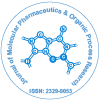Integrating Kinetics, Thermodynamics, and Transport in Reaction Engineering
Received: 01-Mar-2025 / Manuscript No. JMPOPR-25-168347 / Editor assigned: 03-Mar-2025 / PreQC No. JMPOPR-25-168347(PQ) / Reviewed: 17-Mar-2025 / QC No. JMPOPR-25-168347 / Revised: 22-Mar-2024 / Manuscript No. JMPOPR-25-168347(R) / Published Date: 28-Mar-2025
Abstract
Reaction engineering is a multidisciplinary field that applies chemical kinetics, thermodynamics, transport phenomena, and reactor design principles to develop efficient, scalable, and safe chemical processes. It forms the foundation of process development in the chemical, petrochemical, and pharmaceutical industries. The discipline involves modeling and optimizing chemical reactors to achieve desired conversion rates, product selectivity, and energy efficiency. This article discusses the core principles of reaction engineering, various reactor types, kinetic modeling approaches, and recent advancements in computational tools and process intensification strategies.
Keywords
Reaction engineering; Chemical kinetics; Reactor design; Conversion; Selectivity; Thermodynamics; Process modeling; Catalytic reactors; Residence time; Process intensification
Introduction
The transformation of raw materials into valuable products via chemical reactions requires not only a sound understanding of chemistry but also the engineering skills to control and optimize these reactions at scale. Reaction engineering addresses this need by focusing on the design, operation, and optimization of chemical reactors. It connects molecular-level reaction mechanisms with macro-level reactor performance, facilitating efficient and cost-effective chemical production [1]. From bulk commodity synthesis to complex pharmaceutical manufacturing, reaction engineering is integral to industrial chemistry.
Description
Central to reaction engineering is the relationship between reaction kinetics, thermodynamics, and transport phenomena. The rate of a chemical reaction depends on concentration, temperature, pressure, and catalyst presence, which must be balanced with heat and mass transfer limitations in the reactor [2]. Engineers use rate laws and reaction mechanisms to model reactor behavior and determine optimal operating conditions.
Common reactor types include batch reactors, continuous stirred-tank reactors (CSTRs), plug flow reactors (PFRs), and packed-bed reactors. Each type offers distinct advantages based on the nature of the reaction and scale of production. For example, CSTRs are ideal for homogenous reactions requiring thorough mixing, while PFRs provide superior performance for high-throughput, steady-state operations [3].
Reaction engineering also involves the design and analysis of catalytic reactors, which must account for catalyst deactivation, pore diffusion, and heat release. Advanced modeling techniques, including computational fluid dynamics (CFD) and finite element analysis, are now used to simulate complex reactor geometries and optimize flow patterns [4]. Integration with real-time data and process control further enhances performance.
Results
In industrial applications, reaction engineering has led to significant improvements in yield, safety, and resource efficiency. For instance, the catalytic partial oxidation of methane to syngas has been optimized using CFD-based reactor design, improving conversion rates while minimizing hot spots and pressure drops [5]. Similarly, the scale-up of enzymatic esterification processes has been made feasible through kinetic modeling and reactor optimization, reducing batch cycle time by 50% [6].
The development of fluidized-bed reactors for polymerization processes has increased polymer uniformity and heat transfer rates. In pharmaceutical manufacturing, precise modeling of heat-sensitive reactions in jacketed reactors has reduced thermal degradation and increased batch reproducibility [7]. These results demonstrate the critical role of reactor design and control in successful process development.
Discussion
Despite its maturity, reaction engineering continues to evolve in response to new challenges. The shift toward green and sustainable chemistry demands processes that minimize waste and energy consumption. Novel reactor designs such as spinning disk reactors, oscillatory baffled reactors, and microreactors are being explored for intensified processes with improved efficiency and scalability [8].
Digital twins and AI-driven models are emerging as tools for real-time optimization, predictive maintenance, and fault detection in reactors. Furthermore, modular and flexible reactor systems are gaining popularity, especially in pharmaceutical and fine chemical production, where rapid adaptation to new products is essential [9]. The challenge remains in integrating reaction engineering principles with upstream and downstream operations for a holistic approach to process design.
Conclusion
Reaction engineering serves as the backbone of modern chemical manufacturing, enabling the safe, scalable, and efficient transformation of reactants into products. By combining chemical kinetics, thermodynamics, and transport processes with advanced reactor design, it bridges the gap between laboratory chemistry and industrial production. As sustainability, digitalization, and process intensification reshape the chemical industry, reaction engineering will continue to play a central role in developing next-generation processes.
Citation: Carlos E (2025) Integrating Kinetics, Thermodynamics, and Transport inReaction Engineering. J Mol Pharm Org Process Res 13: 283.
Copyright: 穢 2025 Carlos E. This is an open-access article distributed under theterms of the Creative Commons Attribution License, which permits unrestricteduse, distribution, and reproduction in any medium, provided the original author andsource are credited.
Select your language of interest to view the total content in your interested language
Share This Article
Recommended Journals
91勛圖 Journals
Article Usage
- Total views: 107
- [From(publication date): 0-0 - Sep 08, 2025]
- Breakdown by view type
- HTML page views: 78
- PDF downloads: 29
